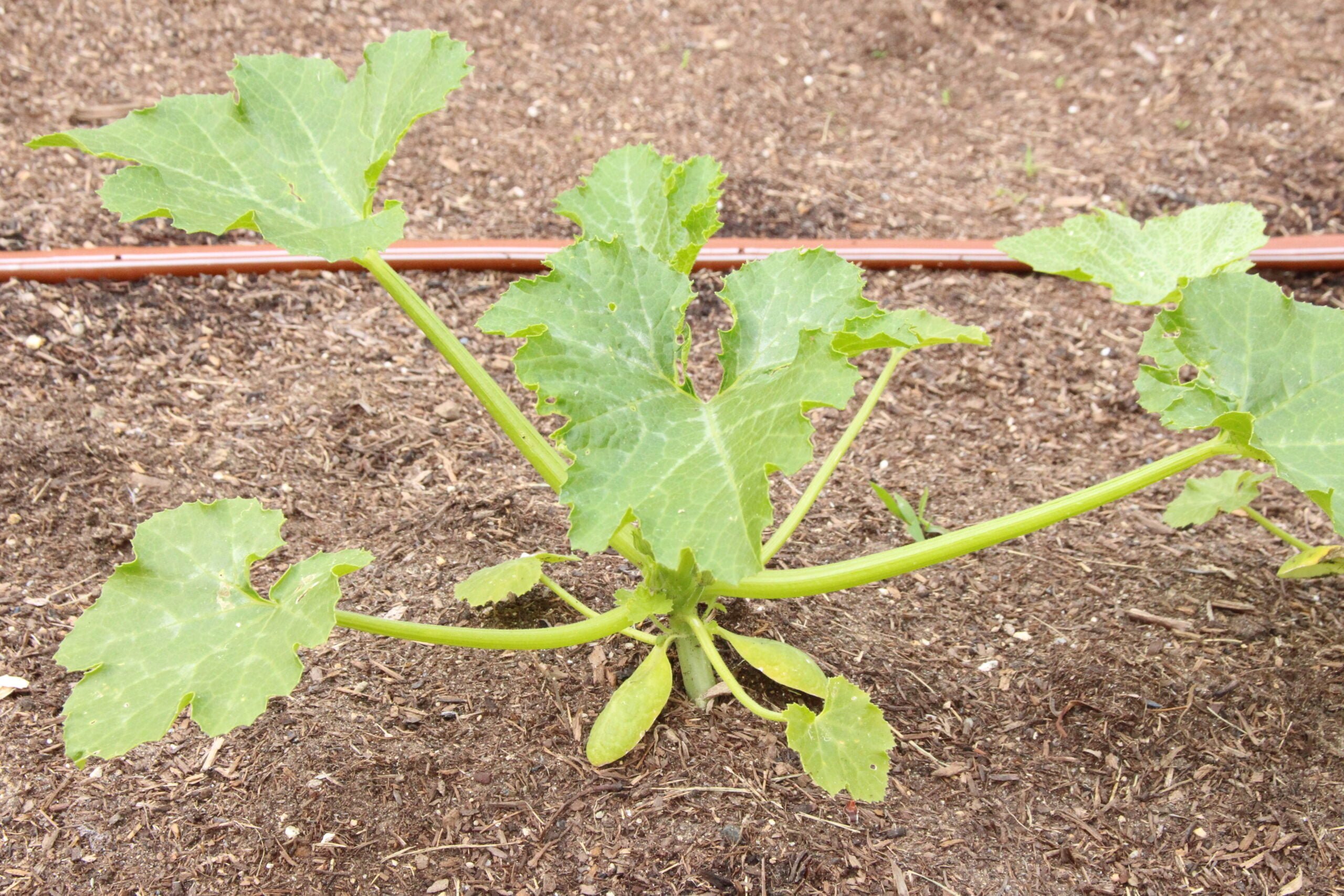If you want to ensure a bountiful harvest of zucchini, it’s crucial to know how to properly water your zucchini plants. While it may seem like a simple task, watering zucchini plants correctly can make a significant difference in their growth and productivity. In this article, we will explore the best practices for watering zucchini plants, including how often to water them, to help you cultivate healthy and thriving zucchini in your garden.
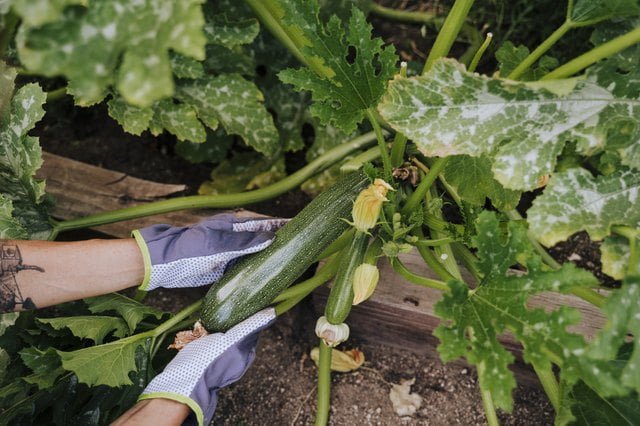
Understanding the Watering Needs of Zucchini Plants
The Importance of Properly Watering Zucchini Plants
Properly watering zucchini plants is crucial for their health and productivity. Water is essential for the growth and development of any plant, and zucchini is no exception. Adequate watering ensures that zucchini plants receive the necessary nutrients and maintain their health, leading to optimal production of delicious zucchinis.
Factors Affecting the Watering Frequency for Zucchini Plants
Several factors influence the watering frequency for zucchini plants. The climate, weather conditions, soil type, and stage of growth are all significant factors to consider. In hot and dry climates, zucchini plants tend to require more frequent and deeper watering. Similarly, sandy soils drain water quickly, necessitating more frequent watering. On the other hand, cooler climates and clay soils may require less frequent watering.
Signs of Overwatering or Underwatering in Zucchini Plants
It’s essential to recognize the signs of overwatering or underwatering in zucchini plants to adjust the watering accordingly. Overwatering can lead to root rot, yellowing leaves, wilting, and a general decline in plant health. Underwatering, on the other hand, can cause stunted growth, drooping leaves, and a lack of vigor. Regularly monitoring your zucchini plants will help you identify these signs and take appropriate action.
Determining the Right Watering Schedule for Zucchini Plants
Watering Zucchini Plants during Different Growth Stages
Zucchini plants have different watering requirements throughout their growth stages. During the initial stage of seed germination and transplanting, it’s crucial to keep the soil consistently moist. Once the plants establish their root systems, reduce the frequency of watering to encourage deeper root growth. As the plants enter the flowering and fruiting stage, consistent moisture is vital to support the development of healthy and tasty zucchinis.
Evaluating Environmental Factors for Adjusting Watering Frequency
Environmental factors play a significant role in determining the watering frequency for zucchini plants. In addition to climate and soil type, factors such as rainfall, humidity levels, and wind exposure should be taken into account. Adjusting the watering frequency based on these external factors will help provide an optimal growing environment for the zucchini plants.
Knowing the Average Watering Schedule for Zucchini Plants
Although watering schedules may vary depending on specific conditions, a general guideline for watering zucchini plants is to provide about 1-1.5 inches of water per week. This can be achieved through a combination of rainfall and supplemental watering. However, it’s important to monitor the soil moisture levels regularly and adjust the watering schedule accordingly to avoid over or underwatering.
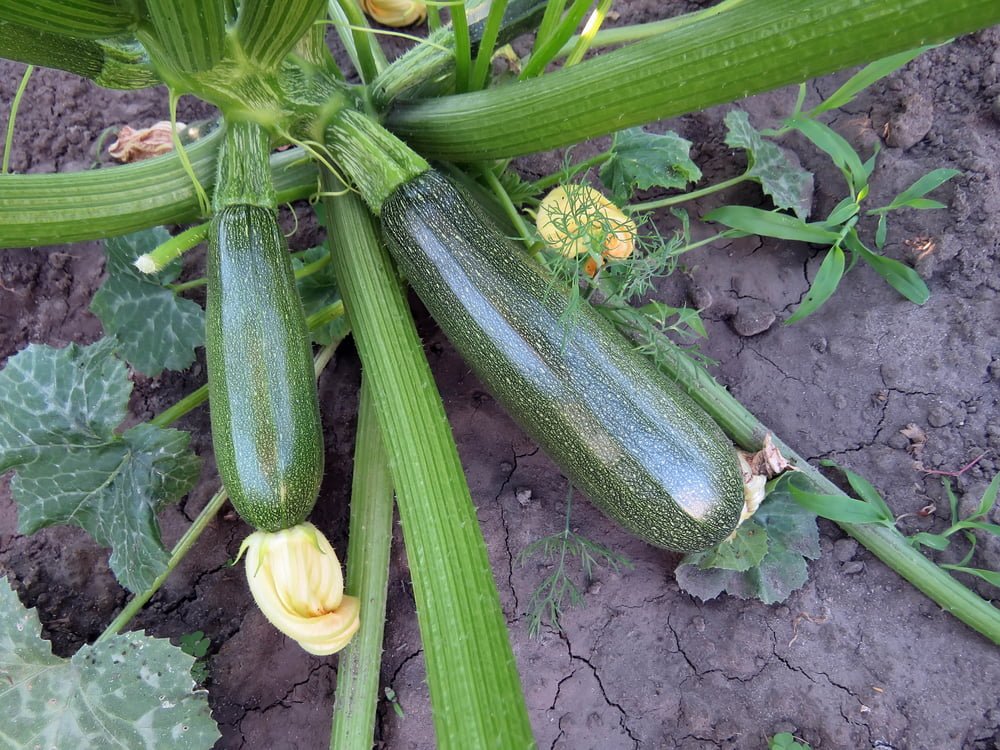
Watering Techniques for Zucchini Plants
Watering Methods for Zucchini Plants
There are various watering methods suitable for zucchini plants, including overhead watering, drip irrigation, and soaker hoses. Overhead watering, such as using a watering can or a sprinkler, is a common method but may lead to water wastage and increased risk of diseases. Drip irrigation and soaker hoses are more efficient methods as they deliver water directly to the root zone, minimizing water loss and reducing the likelihood of fungal diseases.
Choosing the Right Watering Tools for Zucchini Plants
Selecting the appropriate watering tools is essential for efficient and effective watering of zucchini plants. A watering can or a garden hose with a gentle spray nozzle is suitable for smaller gardens or individual plants. For larger areas, a soaker hose or a sprinkler system may be more convenient. It’s important to choose tools that provide a controlled flow of water and allow for accurate targeting of the root zone to avoid water waste and unnecessary wetting of foliage.
Understanding the Best Practices for Watering Zucchini Plants
To ensure the best watering practices for zucchini plants, there are a few key guidelines to follow. Water the plants in the early morning or late afternoon, when temperatures are cooler and evaporation rates are lower. This allows the plants to take up water efficiently and reduces the risk of foliage diseases. Avoid wetting the foliage as much as possible to prevent the spread of fungal diseases. Lastly, water slowly and deeply to encourage deep root growth and enhance the plant’s ability to withstand drought conditions.
Proper Watering Amount for Zucchini Plants
Determining the Ideal Amount of Water for Zucchini Plants
Determining the ideal amount of water for zucchini plants can be challenging but essential for their health and productivity. As a general guide, providing about 1-1.5 inches of water per week is sufficient. However, it’s crucial to consider specific environmental factors and plant needs. Factors such as temperature, humidity, rainfall, and soil composition should be taken into account when determining the appropriate amount of water to ensure optimal plant growth.
The Importance of Proper Drainage for Zucchini Plants
Proper drainage is crucial for zucchini plants to prevent waterlogging and avoid root rot. Heavy, compacted soils with poor drainage can lead to water accumulation around the roots, depriving them of oxygen and causing immense stress to the plants. To improve drainage, incorporating organic matter into the soil and using raised beds or containers can be beneficial. This creates a well-drained environment that allows excess water to move away from the plants’ roots.
Tips for Avoiding Water Stress in Zucchini Plants
To avoid water stress in zucchini plants, it’s important to maintain consistent soil moisture levels. Water stress can occur when plants experience fluctuations in water availability, which can impact their growth and productivity. Regularly monitor the soil moisture levels using a moisture meter or by manually checking the soil. Adjust the watering schedule accordingly to ensure the plants receive adequate moisture without being waterlogged or experiencing drought stress.
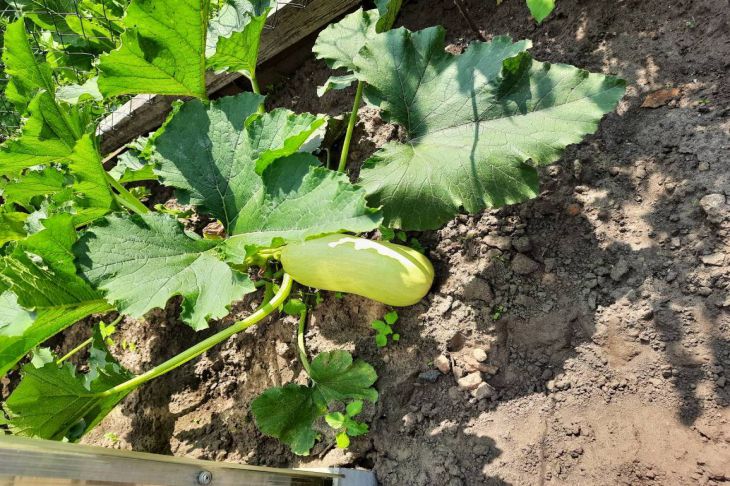
Watering Tips for Maintaining Healthy Zucchini Plants
Regularly Monitoring Soil Moisture Levels
Regularly monitoring the soil moisture levels is essential for maintaining healthy zucchini plants. This can be done by inserting a finger into the soil or using a moisture meter. Aim for a slightly moist soil, not overly dry or saturated. By keeping a close eye on soil moisture, you can adjust the watering frequency and amount as necessary to ensure the plants receive optimal hydration.
Mulching as a Water Conservation Technique
Mulching is an effective water conservation technique that can benefit zucchini plants. Applying a layer of organic mulch, such as straw or wood chips, around the base of the plants helps to retain moisture in the soil, reducing water evaporation and weed growth. Mulching also helps to regulate soil temperature, keeping it cooler during hot weather and insulating it during cooler periods. This allows the plants to better utilize the available water while promoting overall plant health.
Applying Water at the Right Time of Day
Timing is crucial when it comes to watering zucchini plants. Watering early in the morning or late in the afternoon is recommended, as this allows the plants to take up water before the heat of the day evaporates it. Avoid watering during the hottest part of the day, as this can result in excessive evaporation and potential leaf burn. Watering in the evening is also discouraged, as it can promote fungal diseases due to prolonged moisture on the foliage.
Dealing with Common Watering Issues for Zucchini Plants
Strategies for Managing Overwatered Zucchini Plants
Overwatering zucchini plants can lead to various issues such as root rot and nutrient deficiencies. If you suspect your zucchini plants are overwatered, it’s important to take immediate action. Allow the soil to dry out between waterings to prevent further waterlogging. Adjust the watering schedule to provide water only when the plants truly need it. Additionally, ensure proper soil drainage and consider amending the soil with organic matter to improve its structure and water-holding capacity.
Strategies for Managing Underwatered Zucchini Plants
Underwatered zucchini plants may show signs of stress, including wilting and stunted growth. To address this issue, increase the frequency and duration of watering. Monitor the soil moisture regularly and provide water whenever the soil begins to dry out. Consider using mulch to help retain moisture in the soil. It’s important to maintain consistent watering practices to prevent stress and promote healthy growth in underwatered zucchini plants.
Preventing Disease and Pest Infestations Related to Improper Watering
Improper watering practices can create favorable conditions for disease and pest infestations in zucchini plants. Overly wet conditions can lead to fungal diseases, such as powdery mildew and root rot. To prevent these issues, avoid watering the foliage and promote good air circulation around the plants. This can be achieved by watering at the base of the plants and spacing them adequately. Regularly inspect your plants for any signs of disease or pests, and take appropriate measures such as applying organic fungicides or using biological pest controls when necessary.

Watering Zucchini Plants in Different Growing Environments
Watering Zucchini Plants in Raised Beds
Watering zucchini plants in raised beds requires specific considerations. Raised beds tend to drain faster than traditional garden beds, so more frequent watering may be necessary. Additionally, the soil in raised beds may dry out more quickly, especially during hot weather. It’s important to monitor the soil moisture levels regularly and provide adequate water to prevent the plants from becoming stressed. Mulching the raised beds can help conserve moisture and maintain consistent soil moisture levels.
Watering Zucchini Plants in Containers
Growing zucchini plants in containers can be convenient, but it also requires careful watering. Containers have limited soil volume, and the soil can dry out quickly. As a result, container-grown zucchini plants may need more frequent watering. Check the moisture levels in the containers daily, especially during hot weather, and water accordingly to keep the soil consistently moist. Be sure to use well-draining potting mix and provide drainage holes in the containers to prevent waterlogging.
Watering Zucchini Plants in Traditional Garden Beds
Watering zucchini plants in traditional garden beds follows similar guidelines as raised beds. Monitor the soil moisture levels regularly and adjust the watering frequency and amount accordingly. The soil in garden beds should ideally retain moisture but also provide proper drainage to avoid waterlogging. Incorporating organic matter into the soil and mulching can help improve moisture retention and maintain suitable soil conditions for healthy zucchini plants.
Watering Zucchini Plants in Extreme Weather Conditions
Watering Zucchini Plants in Hot and Dry Conditions
Hot and dry conditions can pose challenges for watering zucchini plants. In such conditions, water loss through evaporation is increased, and the plants may require more frequent watering. Increase the watering frequency and adjust the amount of water according to the specific conditions. Apply water slowly and deeply to ensure that it reaches the deeper root zones. Consider using shade cloth or other forms of sun protection to reduce water loss through increased transpiration.
Watering Zucchini Plants in Rainy and Humid Conditions
In rainy and humid conditions, zucchini plants may receive sufficient water from natural rainfall. However, excess moisture can lead to waterlogged soil and increased risk of diseases. To prevent overwatering, monitor the soil moisture levels and adjust the watering schedule accordingly. If the soil is consistently wet due to excessive rainfall, provide drainage by incorporating organic matter or using raised beds. Additionally, consider planting zucchini in areas with good air circulation to minimize the risk of fungal diseases.
Protecting Zucchini Plants during Heatwaves or Cold Spells
Extreme weather conditions, such as heatwaves or cold spells, can negatively impact zucchini plants. During heatwaves, water demand increases, and plants may become stressed from dehydration. Increase the watering frequency and provide shade or use shade cloths to protect the plants from excessive heat. Similarly, during cold spells, monitor the soil moisture levels and provide protection by covering the plants with row covers or using insulated mulch to retain soil heat. Protecting zucchini plants during extreme weather conditions is crucial for their survival and productivity.
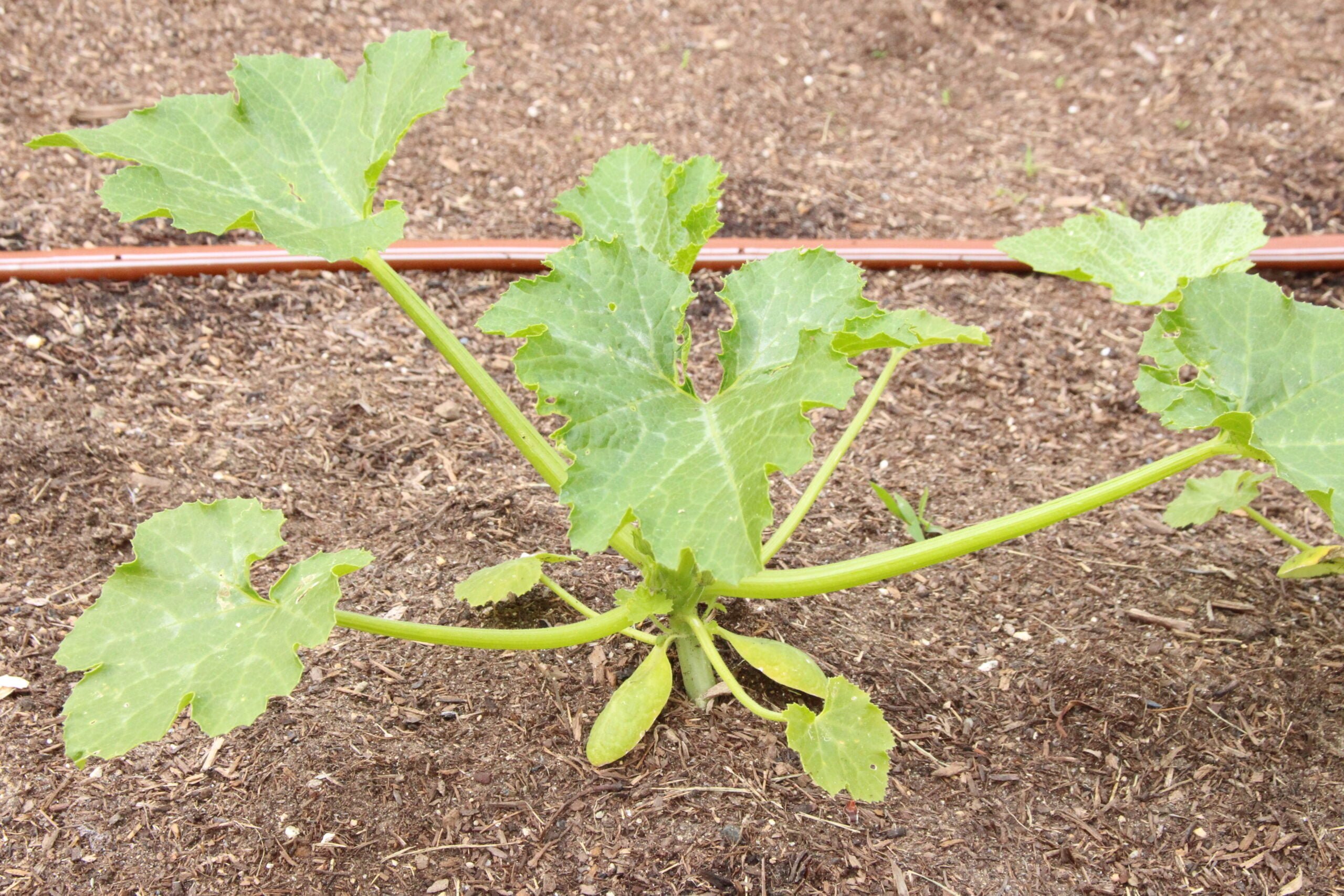
Advanced Watering Techniques for Optimal Zucchini Production
Drip Irrigation Systems for Zucchini Plants
Drip irrigation systems are an advanced and efficient watering technique for zucchini plants. Drip irrigation delivers water directly to the plant’s root zone, minimizing water waste and reducing the risk of fungal diseases. The slow and controlled release of water promotes deep root growth and ensures that each plant receives adequate hydration. Drip irrigation systems can be set on timers, providing consistent and efficient watering, especially in larger gardens or commercial farms.
Hydroponic Systems for Zucchini Cultivation
Hydroponic systems offer another advanced watering technique for zucchini cultivation. Hydroponics involves growing plants in nutrient-rich water without soil. These systems allow for precise control over water and nutrient delivery, resulting in optimized plant growth and increased productivity. Hydroponics is particularly suitable for urban or indoor gardening, where space and soil quality may be limited. However, it’s important to note that hydroponic systems require specialized equipment and knowledge to set up and maintain.
Techniques for Watering Zucchini in Commercial Farms
In commercial farms, efficient and effective watering techniques are crucial for successful zucchini production. Many commercial farms opt for overhead sprinkler systems or drip irrigation systems. Overhead sprinklers provide uniform coverage but may be less efficient due to water evaporation. Drip irrigation systems offer precise and controlled water delivery, minimizing water waste and promoting healthier plants. Regular monitoring of soil moisture levels, adjusting watering schedules, and incorporating water-saving practices are essential to maintain optimal zucchini production in commercial farming settings.
Conclusion
Properly watering zucchini plants is essential for their overall health, growth, and productivity. Understanding the watering needs, determining the right watering schedule, and employing appropriate watering techniques are key to maintaining optimal soil moisture levels and preventing water stress. Consider environmental factors, such as climate and soil type, and adapt the watering practices accordingly. Be mindful of potential watering issues, such as overwatering and underwatering, and take necessary measures to address them promptly. By following the guidelines and utilizing advanced watering techniques when appropriate, you can ensure healthy and thriving zucchini plants that yield an abundance of delicious zucchinis.
